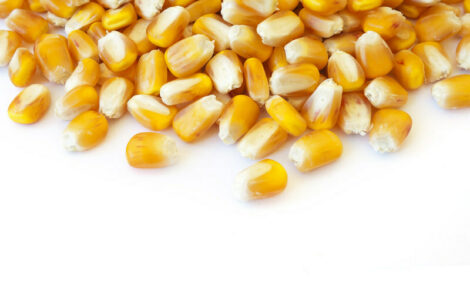



US Pork Outlook Report - January 2007
By U.S.D.A., Economic Research Service - This article is an extract from the January 2007: Livestock, Dairy and Poultry Outlook Report, highlighting Global Pork Industry data.
Hogs/Pork:
The December Quarterly Hogs and Pigs reported first-half 2007 farrowing intentions that are 1.4 percent higher than in the first half of 2006. U.S. commercial pork production in 2007 is expected at 21.7 billion pounds, an increase of slightly more than 3 percent compared with 2006.
Prices of live-equivalent 51- 52 percent lean hogs are expected to range between $42 and $44 per hundredweight (cwt). Pork exports in 2007 are expected to be more than 5 percent higher than in 2006.
Farrowing Intentions Begin To Reflect Higher Feed Costs
Farrowing intentions published in USDA’s Quarterly Hogs and Pigs, released on December 27, 2006, indicate that producers intend to farrow about 2.2 percent more female breeding animals in the December 2006-February 2007 quarter than in same period last year. Farrowing intentions for the March-May period, however, show only a small year-over-year increase of about 0.5 percent.
This pattern of farrowings—a moderation of farrowing intention rate increases in March-May, after a strong increase in December-February—suggests producers’ awareness that as 2007 unfolds, higher corn prices will increasingly be reflected in hog producers’ costs of production. All other factors held constant, higher production costs mean higher breakeven points and lower—even negative—profits for hog operations. Producers typically respond to prospects of higher production costs by moderating, or scaling back, production.
Litter Rates Continue To Soar
The December report indicates that productivity in the U.S. farrowing industry continues to increase. The pigs-per-litter metric for the September-November quarter, at 9.13 pigs per litter, was slightly more than 1 percent larger than for the same period a year earlier. In the past 5 years, September-November pigs-per-litter have increased 3 percent, from 8.86 to 9.13 pigs per litter.

Pork Production in 2007 Expected To Increase About 3 Percent
Based on the farrowing intentions reported in the December Quarterly Hogs and Pigs report, and assuming that higher feed costs will restrain growth in dressed weights to their approximate 2006 levels, USDA forecasts 2007 U.S. commercial pork production at 21.7 billion pounds, an increase of 3 percent compared with 2006. All other factors held constant, larger pork supplies might be expected to push hog prices significantly lower. However, several factors are likely to mitigate the effects of large pork supplies on hog prices this year including lower expected first-half U.S. poultry production, which is likely to bolster domestic pork demand. Also, foreign demand for U.S. pork products is expected to remain strong.
Continued favorable exchange rates, plus attractive U.S. pork prices, are expected to drive U.S. pork exports to about 3.2 billion pounds, more than 5 percent above 2006. Larger pork supplies and strong pork demand are expected to translate into hog prices ranging between $42 and $44 per cwt, for live-equivalent prices of 51-52 percent lean hogs in 2007, 9 percent lower than last year.
Live Swine Imports Increase Seasonally, Slaughter Hog Share Increasing
Swine import data for October and November 2006 show that the U.S. demand for Canadian swine—primarily animals for finishing and slaughter hogs—continues to exceed year earlier levels. Combined imports for October and November were more than 10 percent larger than for the same period in 2005. U.S. Customs data reported that October-November swine imports were 1.6 million head, 64 percent of which were animals for finishing. Imports in the same period last year were 1.4 million head, of which 63 percent were animals for finishing.
U.S. swine imports are expected to finish 2006 at more than 8.7 million head, the highest ever total. In 2007 imports are likely to achieve another record—9 million head—given financial pressures on Canadian processors and existing incentives to finish pigs in the United States.
Noteworthy in the October-November 2006 data, the slaughter hog share of imports increased to 35 percent, up from 28 percent in the first half of the year. This increase is also reflected in weekly data, published by USDA’s Agricultural Marketing Service (AMS). The figure below shows weekly AMS data, through December 30, 2006, aggregated by quarter for the major swine importing States of Michigan and North Dakota. Michigan’s 2006 slaughter hog share increased from 32 percent in the first quarter to 47 percent in the fourth quarter. North Dakota’s share rose from 17 percent in the first quarter to 23 percent in the fourth quarter.
The increase in the slaughter hog proportion of U.S. swine imports in the second half of 2006 is largely a reflection of the mounting stress of the export-dependent Canadian pork industry, inflicted on it by the high-valued Canadian dollar. (See discussion of Canadian pork sector situation in the November issue of the Livestock, Dairy and Poultry Outlook, http://www.ers.usda.gov/publications/ldp/ ). As the Canadian pork industry restructures, U.S. packers will likely continue to outbid Canadian competitors for hogs, resulting in larger 2007 slaughter hog proportions than in the first half of 2006.
Fourth Quarter Pork Exports Well Ahead of Last Year
U.S. companies exported almost 15 percent more pork products in October- November 2006 than in the same period of 2005. While exports were slower than expected in October, at 238 million lbs—slightly more than 7 percent above October 2005—November exports surged to nearly 294 million lbs, 22 percent ahead of a year earlier.
Although November 2006 exports to almost all major markets were larger than in November 2005, exports to three countries, Japan, Russia, and South Korea, set the November export numbers apart from exports in October. Japan—the United States’ most important export market—registered year-over-year gains in November for the first time since August. U.S. exports to Japan have been yearover- year lower in 8 of the last 11 months.
Lower Japanese imports in 2006 have been attributed to two factors: higher-than-normal stocks—likely accumulated in 2005 in response to BSE and Avian Influenza concerns—and stepped-up enforcement of the rules that regulate Japan’s complex pork import regime. But it appears that Japanese consumers’ well-documented preference for pork products to celebrate the holiday season trumped higher stocks and law enforcement issues. U.S. exports to Japan in November jumped almost 20 percent over November 2005. Through November 2006, Japan has accounted for an average of 34 percent of U.S. exports, compared with 40 percent last year.
U.S. exports to Russia in October–November of almost 49 million lbs were 126 percent above those of the same period in 2005. Russia currently restricts fresh and frozen Brazilian pork products from its market, creating market opportunities for U.S. pork products. This factor, plus significant income growth deriving from strong petroleum and natural gas prices, has increased Russian pork demand. Through November, Russia’s share of U.S. exports averaged more than 6.7 percent, compared with about 4 percent for the same period in 2005.
October-November pork exports to South Korea were almost 58 million lbs, 56 percent greater than for the same period in 2005. Higher pork exports to South Korea are attributable to trade issues related to BSE incidents in the United States. South Korea has compensated for lower beef supplies by increasing pork imports.
The appreciating value of the South Korean currency, the won, has likely been another factor that has enhanced the competitiveness of U.S. pork relative to other major pork-exporting countries. In 2006, the won gained 6 percent against the U.S. dollar. In 2005, South Korea accounted for an average of 7 percent of U.S. pork exports over the January-November period. In 2006, over the same period, South Korea’s share of U.S. pork exports averaged 9 percent.
For 2006, U.S. pork exports are expected to be just shy of 3 billion pounds, likely finishing slightly more than 15 percent ahead of 2005. On average, first-half 2006 exports were almost 16 percent greater than in the first half of 2005. In the second half of 2006, exports will likely average about 9 percent ahead of second-half 2005.
Further Information
For more information view the full Livestock, Dairy and Poultry Outlook - January 2007 (pdf)January 2007








